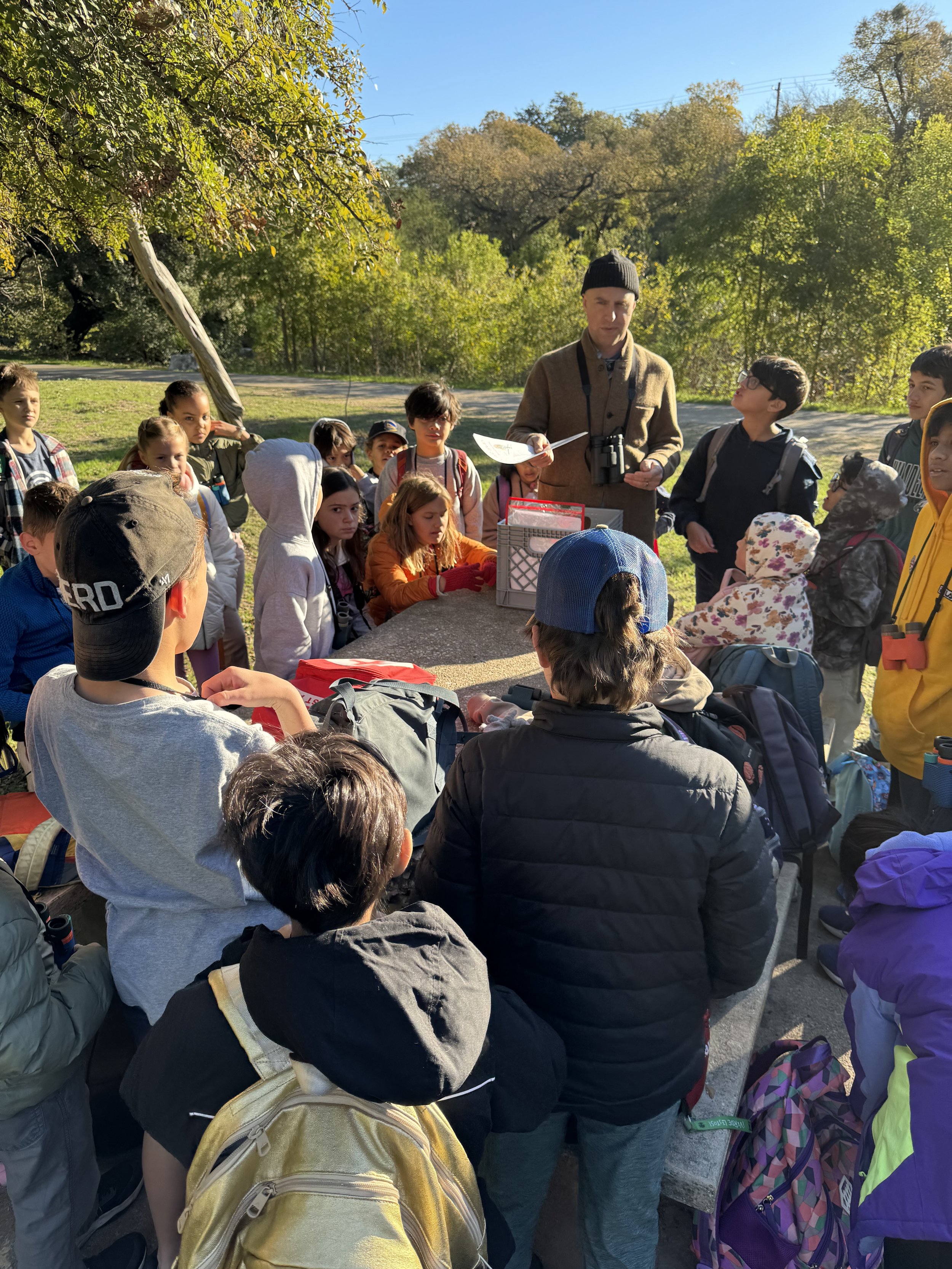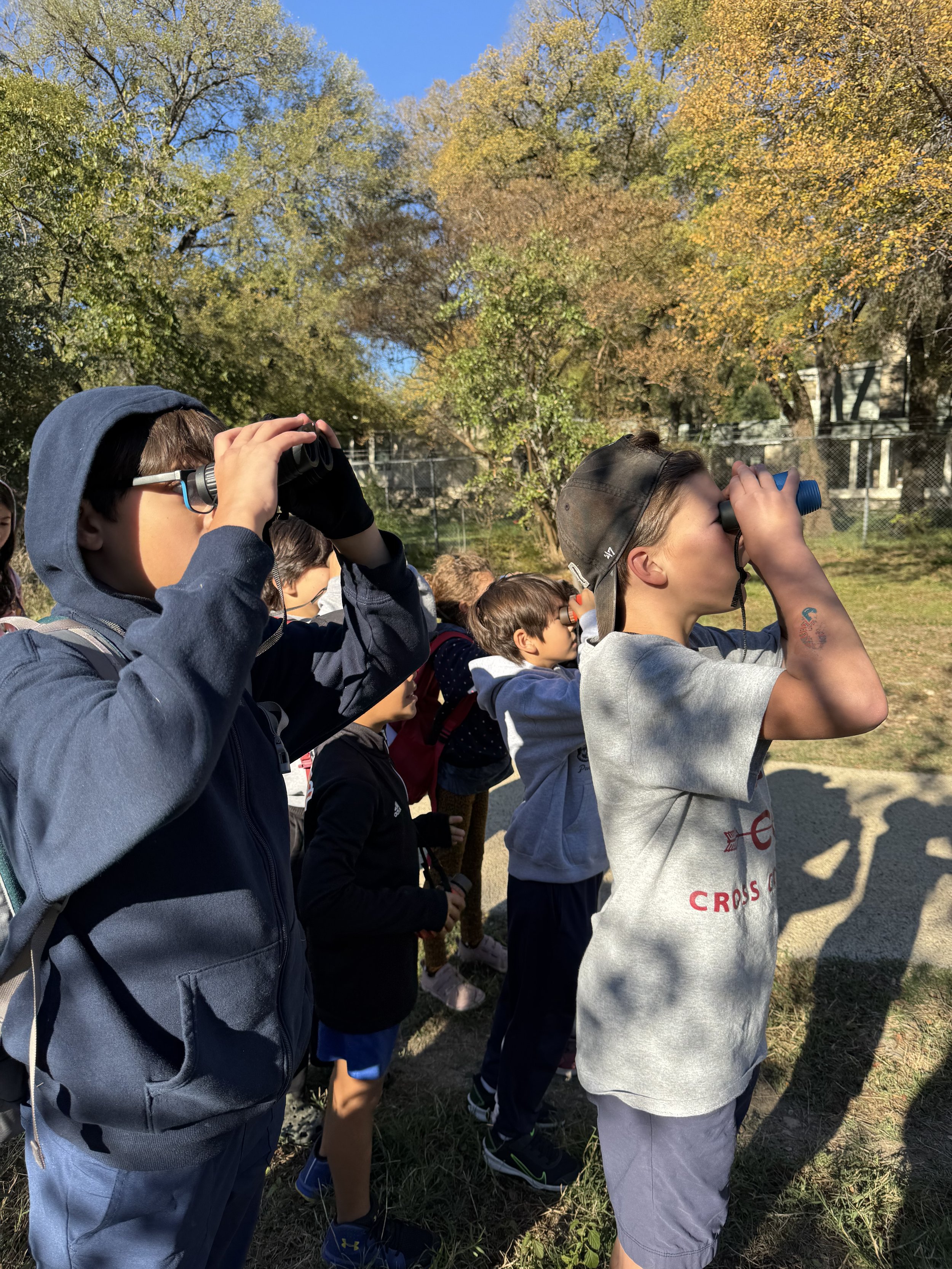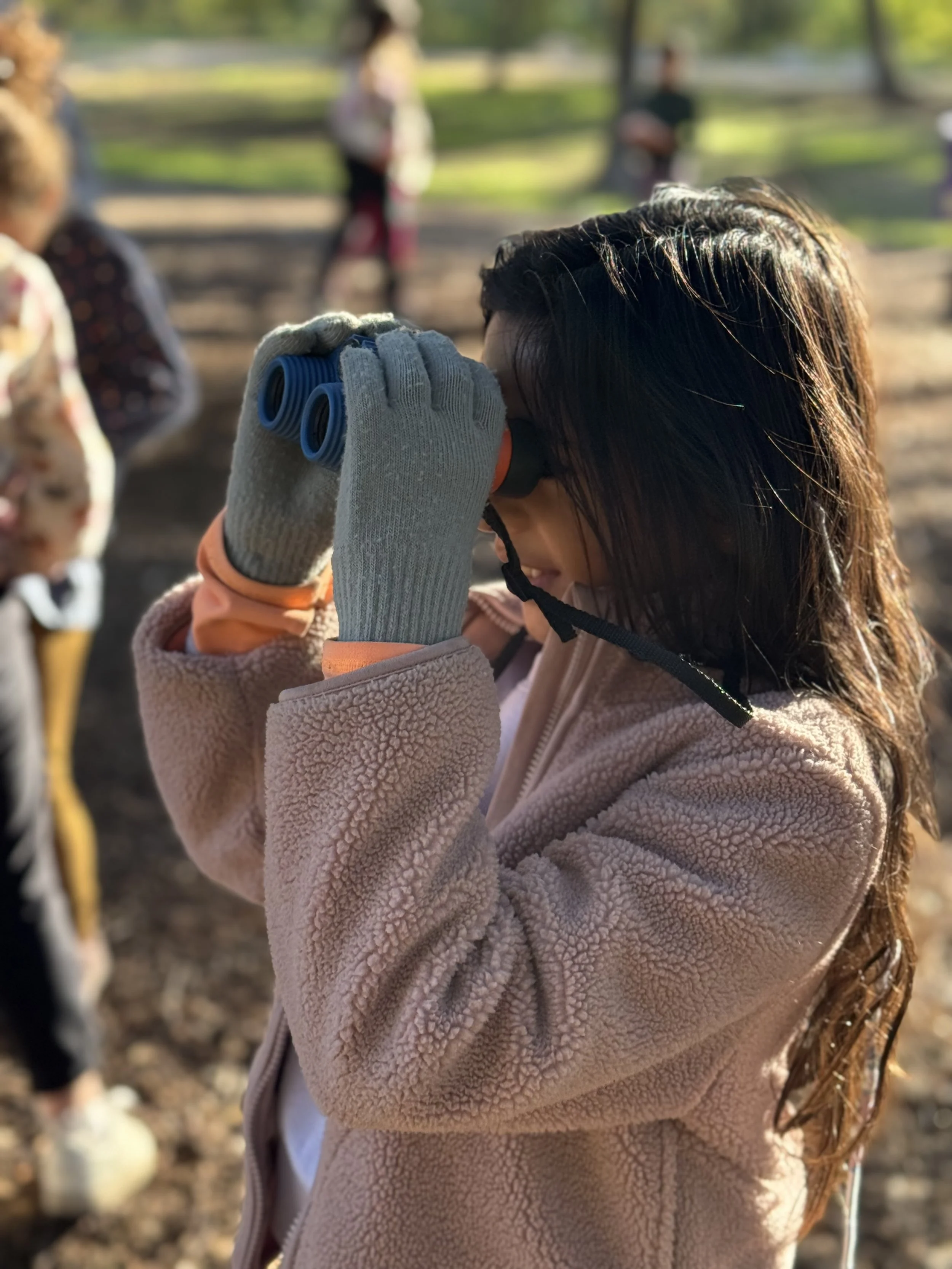It’s Not About The Birds: Long-View’s Birding Club
On Tuesday mornings in the hour before school this fall, the Long-View building has been unusually quiet. That’s because a sizable chunk of our learner population can be found down the street, at the park, with binoculars in hand, looking for birds.
Birding Club meets once a week, but every day in the Science Block for this year’s younger bands, Marigold and Indigo, avian themes are guiding explorations of all kinds. Because many older learners experienced a first iteration of these themes in their own Science Blocks several years ago, birding has begun to feel like an important part of Long-View’s culture. Learners and teachers alike can be found quizzing each other with bird identification cards before or after school, or hanging out on the porch by the feeders, debating whether the bird that just perched on the railing was an Eastern Phoebe or a Northern Mockingbird.
As Ms. Zapalac – one of our co-founders and an avid birder – pointed out, birding at Long-View isn’t really (or, only) about the birds. In a recent conversation, Mr. Cooley, who leads Science for Marigold and Indigo, discussed the practices and concepts that underlie this curricular work, as well as his own fascination with the study of birds. Here are some excerpts from his remarks.
We’re starting off with observational skills, like drawing birds and field notebooks, as well as identification, because you just need to know what you're looking at before you can do much. We're going to use ornithology as a way to look at evolution and natural selection, as well as ecology in general – the relationship between a habitat and the things that can live there.
A big theme in the younger grades is inquiring into the relationship between structure and function in the natural world. With birds right now, we’re trying to notice the non-accidental relationship between the adaptations the bird has and the place that it lives and what it eats. We see the structure and function relationship there as well; for instance, a beak isn't just long because it has style, but because it serves a particular function. We even study forks and how they have different shapes because they need to do different things: the way something is built will tell you how it wants to be used or what it wants to do. I’m trying to offer this as a general lens to start seeing the world through. In the human realm, it's engineering; I can't look out my window and see [a built or natural object] and not think about the structure-function relationship.
Another concept that we're talking a lot about, especially in Marigold Band, is the relationship between learning, knowledge and perception: how we don't even notice or see or perceive the things in the world that we don't know anything about. So it's not like we were all walking around noticing this huge variety of birds and going, "Oh, I don't know the name of it." It's like they didn't even exist until we studied them. And now suddenly, they're everywhere, you know? For me, it was a moment when I walked out into my backyard one day and I looked up in a tree and saw cedar waxwings, and I realized I had never seen cedar waxwings before… even though they had been there all along.
Birding is a great way to train observational skills and also help people get sensitive to the interconnecting nature of all things. Kids find that once they start trying to identify a bird, they start naturally associating with the habitat. And then the natural association with the habitat brings up all these questions about structure and function, evolution, and why a bird is what it is. Once you get started noticing, it's hard to turn that off.




